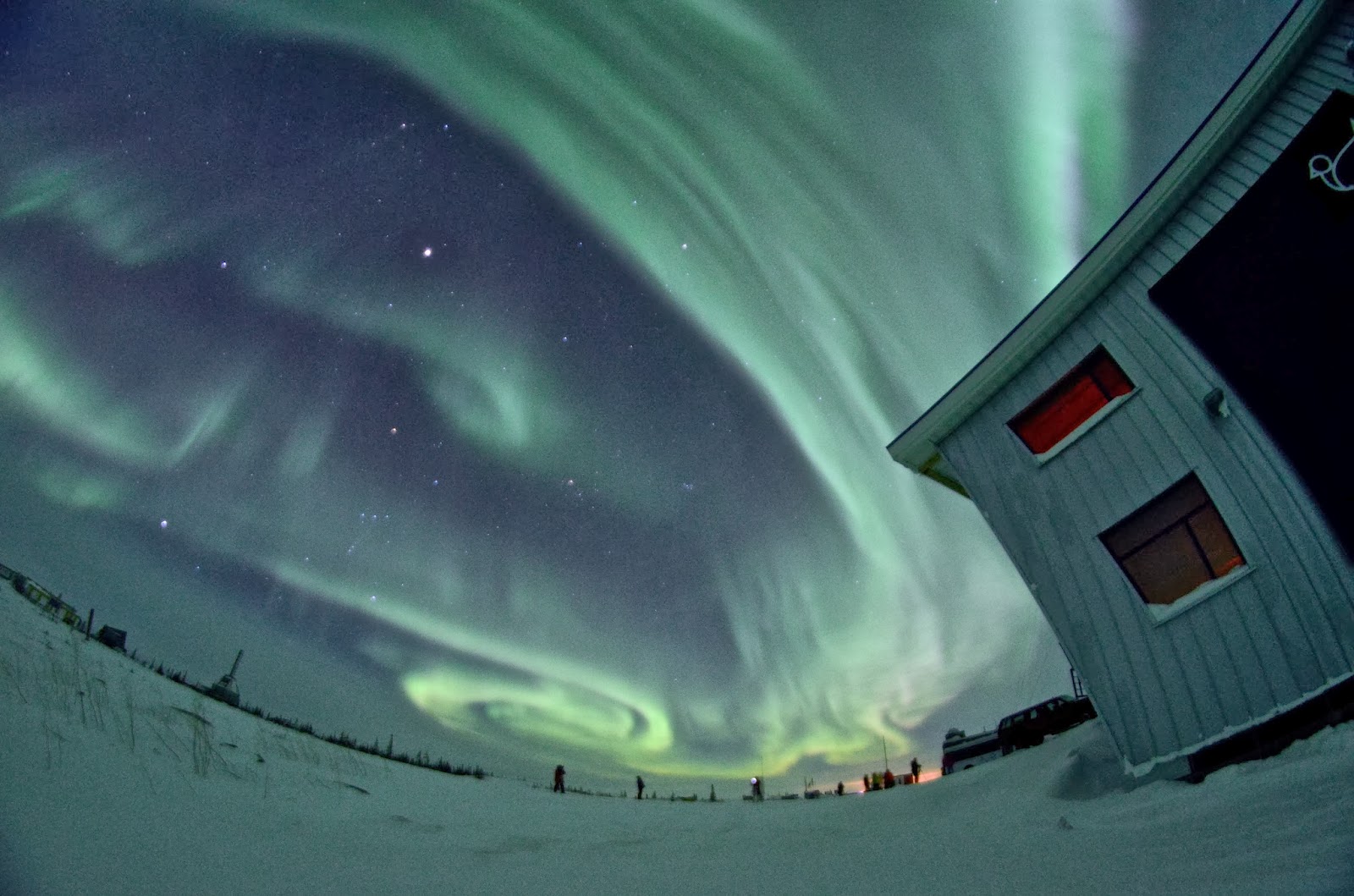It was Super Bowl Sunday, but this year the highlight of the day was an excursion into the boreal forest.
 |
| I believe the Inuit word for this snow frosting is Qali. |
 |
| White Spruce |
The boreal forest is a subarctic, mostly coniferous forest (also known as the Taiga), which is found in northern latitudes. It sits in between the tundra and the temperate forests. In Churchill, the most common tree in the forest is white spruce, and these trees are considerably shorter than the spruce trees back at home. In many cases, they are over 100 years old, so I guess they won't be getting much taller! There are also quite a few larch trees, but again, they are not very tall.
 |
| Snowmobile ride through the Boreal Forest |
 |
| Komatik with easy chair on the back |
We were driven out to the forest in a komatik, a big sled that is pulled behind a snowmobile. Up here, most households have one of these. In town, we saw a komatik with an easy chair sitting on the back of it! Most people in Churchill do not need vehicles, as there really isn't anywhere to drive, other than CNSC of course. Well, there are a few roads, but not many. It seems everyone has a snowmobile, though.
Once we arrived, Mike Goodyear, the CNSC director, did a demonstration of the scientific measurements taken to assess the snowpack. Next week, an Earthwatch team of citizen scientists will be arriving, and they will spend the week collecting data on the snowpack.
 |
| Henry offers to dig the snowpit for Mike |
 |
| Mike Goodyear, our director |
So one of our guests volunteered to dig the snowpit, and we took several measurements- depth (48 cm), temperature (-22C at the top to -6C at the bottom), density by weighing different layers, and types of crystals. We also talked about what animals use the snowpack, and how they use it.
 |
| Heading off to Walk Back |
Now it was time for snowmobile rides and snowshoeing, but I decided to just take a walk through the forest and across the rocket range to head back home. On the way, I was treated to a bit of wildlife! I saw a large bird, about the size of a small chicken, with beautiful black and white patterns on its chest. When one of the scientists came by, she identified it as a spruce grouse. Check out the poor picture below- it was so well camouflaged, that I was having a hard time seeing it in the camera's viewing screen. It is right at the bottom. Then, check the internet for an image. It is quite a handsome bird. And, it was in a spruce tree! Imagine that.
 |
| There is a spruce grouse in the bottom, just to the right of center. |
Even though it was chilly, there was very little wind inside the forest. The sky was overcast, so the photos look almost like a black and white world. It was just gorgeous, and made you thankful to be alive. As soon as I walked away from the group, I felt alone in the forest. Very serene.
 |
| More Snow Covered Trees- Too Pretty for Words! |
In the snow lecture earlier that morning, Mike was talking about snow vocabulary. Where we might have a few words to describe snow, the native cultures of the circumpolar region (First Nation People, Russian, Finnish, etc) have hundreds of words. I particularly love the frosted tress, with the thick clumps of snow.
 |
| Here you can see some definition in the snow patterns from wind |
Churchill is pretty much a polar desert. They do not get much snow, and what they do get is hard to measure. An approximation would be about 100 cm a year. Because it is constantly blowing, open areas have very little ground cover, and the surface patterns look like the ones formed in sandy deserts. Once you go into the forest, the snowpack varies a great deal, but it isn't uncommon for some spots to be 2 meters deep. They may not get much snow, but any snow they get is around for the duration of the winter and much of spring. There is no melting!
 |
| Aurora Rocket Launcher, used to study the upper atmosphere |
Once I finished my magical stroll through the forest, I came out onto the rocket range and made my way back home. In one of these photos, you can see the aurora launcher. There will be more in another post, but pretty much the rockets were used in the late fifties and sixties to study the ionosphere. The wind was with me once again, and it was great to get back inside.

























































